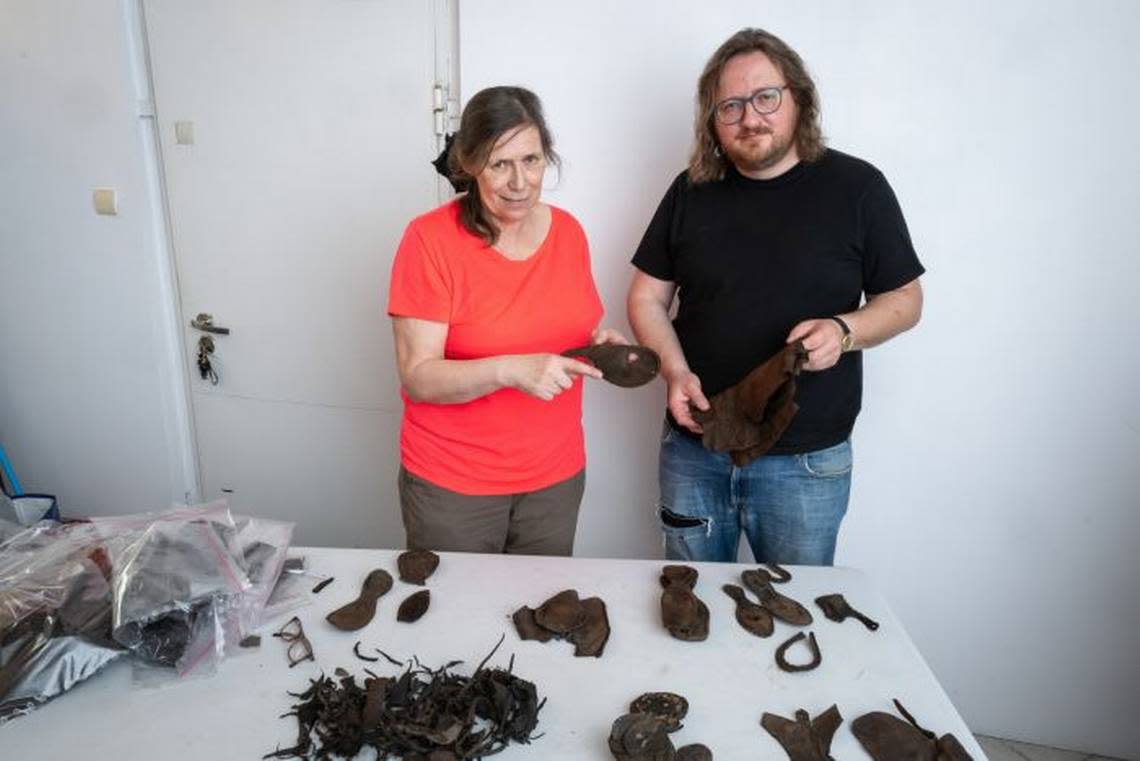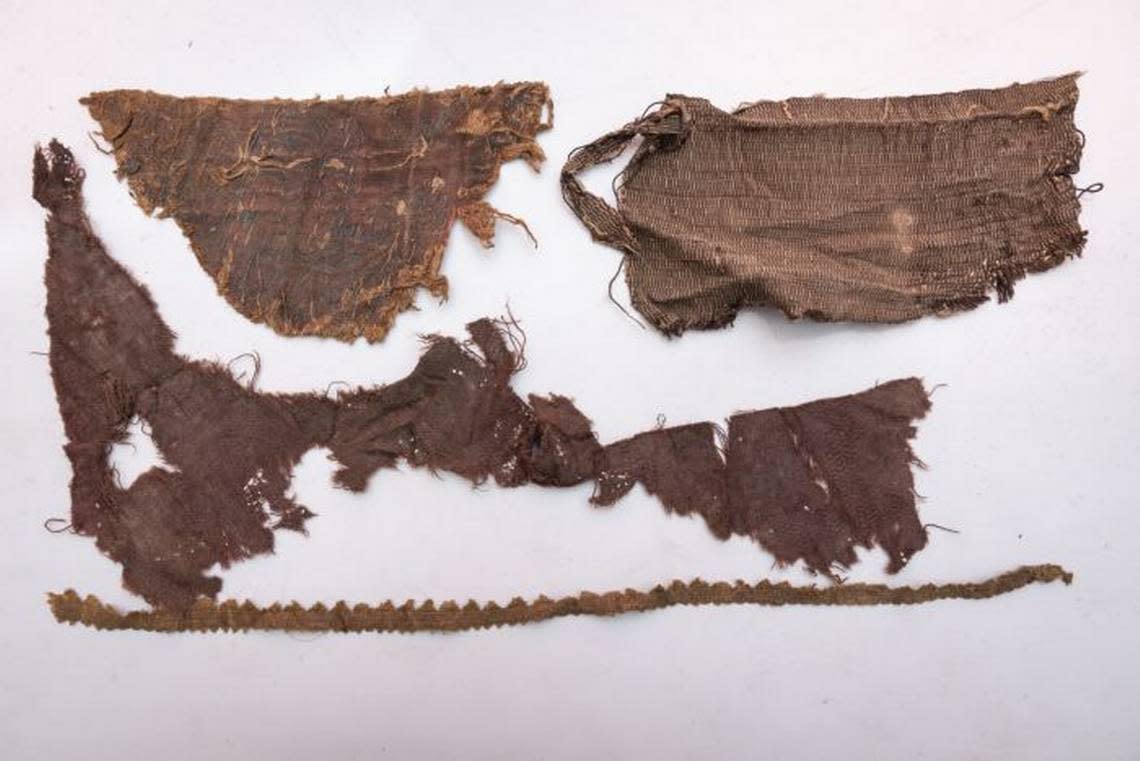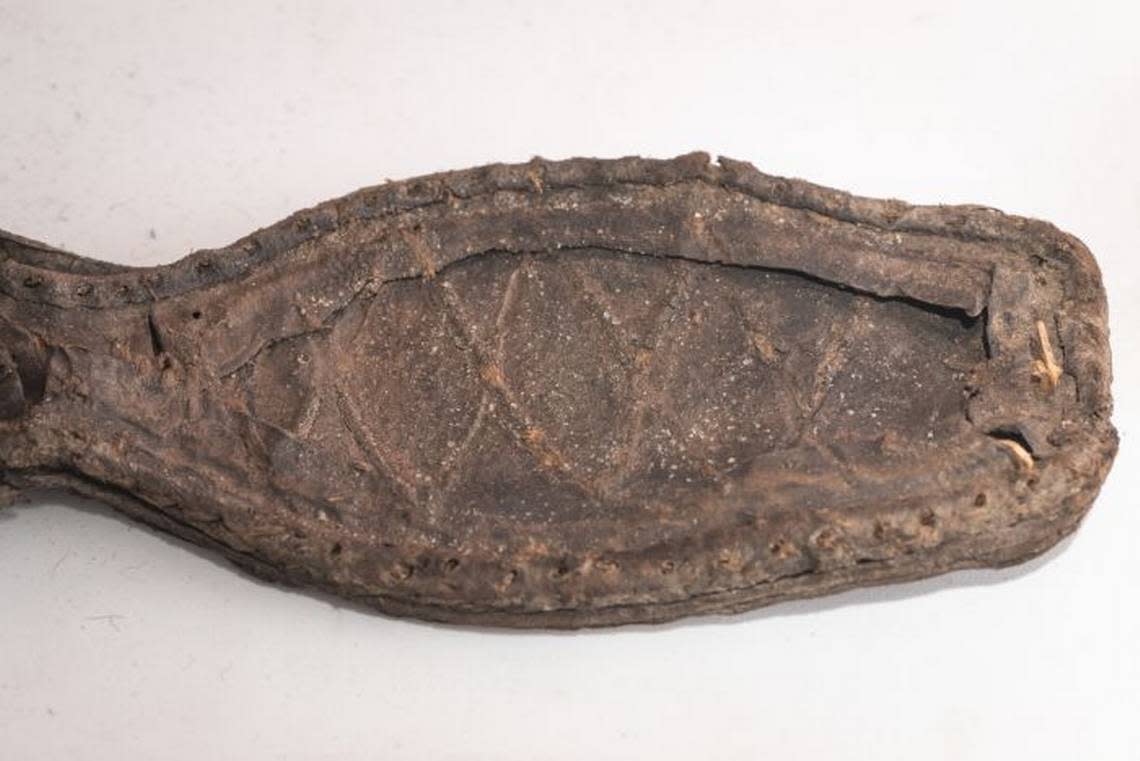Rare collection of centuries-old fabric and shoes discovered in Poland. Take a look
As archaeologists examined the site of a future film center in Poland, they noticed pieces of fabric sticking out from the dirt.
When the soil was brushed away, long strips of clothing emerged, and the soles of shoes poked out from beneath the surface.
The site is in Toruń, a city once at the center of trade and connections between the east and west in the days of the Polish-Lithuanian Commonwealth during the 16th and 17th centuries, according to a May 4 news release from the Ministerstwo Nauki i Szkolnictwa Wyższego, the Ministry of Science and Higher Education.
The fabric and shoes belong to outfits hundreds of years old — and possibly the largest collection ever found in Europe.

Uncover more archaeological finds
What are we learning about the past? Here are three of our most eye-catching archaeology stories from the past week.
→ Massive 2,200-year-old tomb with grand interior unearthed in China
→1,000-year-old weapon — the first of its kind — found sticking out of grave in Spain
→ Workers unearth steelworks at medieval castle in UK — and find someone's 'hidey-hole'
Archaeologists said the collection includes silk fabric, fragments of pleated dresses, floral ornaments, entire shoes in two different styles, butterflies for holding spurs, shoes with cutouts and the trimmings from necklines of clothing, according to the release.
Overall, the clothing is very well preserved, the archaeologists said, and found in larger sets than ever before.
Similar artifacts have been found across Europe, including in Amsterdam, London, Gdańsk, Elbląg, Wrocław, Lübeck, Riga and other cities, according to the release, but rarely are multiple types of clothing found together and with multiples.
For example, woolen stockings have been discovered one or two at a time. At the site in Toruń, 11 stockings were discovered, and the majority of them were preserved, the archaeologists said.

Researchers said the design of the clothes also show how cultures were colliding in the historic city.
Some of the shoes follow a more western style, while others belong to eastern trends, archaeologists said.
The fabric also stood out because of its connection to the elite, according to the release. The silk fabric has only been found in crypts of churches, and a piece of gold cloth that was discovered at the site was one of the most expensive fabrics to be imported to Poland from Turkey or Persia at the time.
One researcher said the quality of the woolen fabric, which was very high, suggested it had been found in the plot of a wealthy person, not with other fabric scraps and pieces.
The quality of the fabric and leather is proof that they were made by a proper worksman and may have been made in the outskirts of town for the city’s high social classes, according to the release.
Butterflies on the shoes were worn as high regalia, the archaeologists said, and were worn by officers who would not have been living in the area.
Because so many pieces were found together, the researchers said it’s possible this was the site of a shoemaker’s workshop or even a repairer’s workshop, where clothes and shoes that had been damaged in the city were brought out to be fixed, according to the release.

One piece, a woolen glove, may have even belonged to a member of clergy, the researchers said. It was made from woolen yarn and was lined with silk, only done for an officer or someone high up in the church, according to the release. Similar gloves have been found in the graves of bishops from the time.
Other discoveries included a metal braid with gilded silver ribbon that would have been in Renaissance hairstyles, as well as other fabric scraps that could have been used to attach pieces together, the researchers said.
The researchers also found pieces of heels that would have marked the beginning of heel-wearing, which was first done by men to slim down their figure and appear taller, according to the release.
Together, the full collection is considered by the researchers to be one of the most impressive in Europe, but the analysis of the pieces is just beginning.
Very little has been written about Toruń during this period of history, according to the release, so the clothing may be a way to begin telling the story of the city.
Toruń is in central Poland along the Vistula River.
Google Translate was used to translate the news release from the Ministerstwo Nauki i Szkolnictwa Wyższego.
Ancient Hun grave found in Poland reveals ‘rare’ glimpse into Asian nomadic warriors
Package from mystery sender arrives at Poland museum — with missing artifacts inside
Metal detectorist spots green object — and finds rare 400-year-old artifact. See it
Metal detectorist stumbles on centuries-old artifact — once banned by tsar — in Poland
